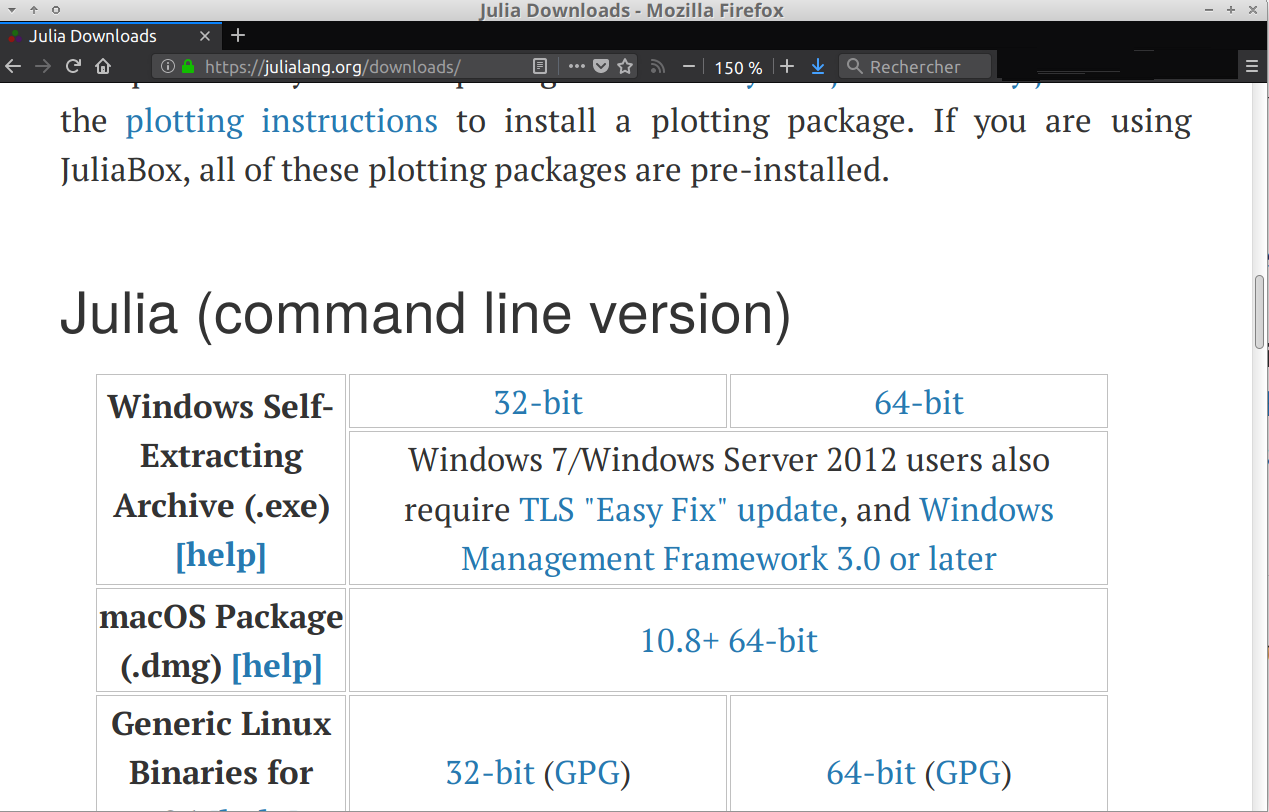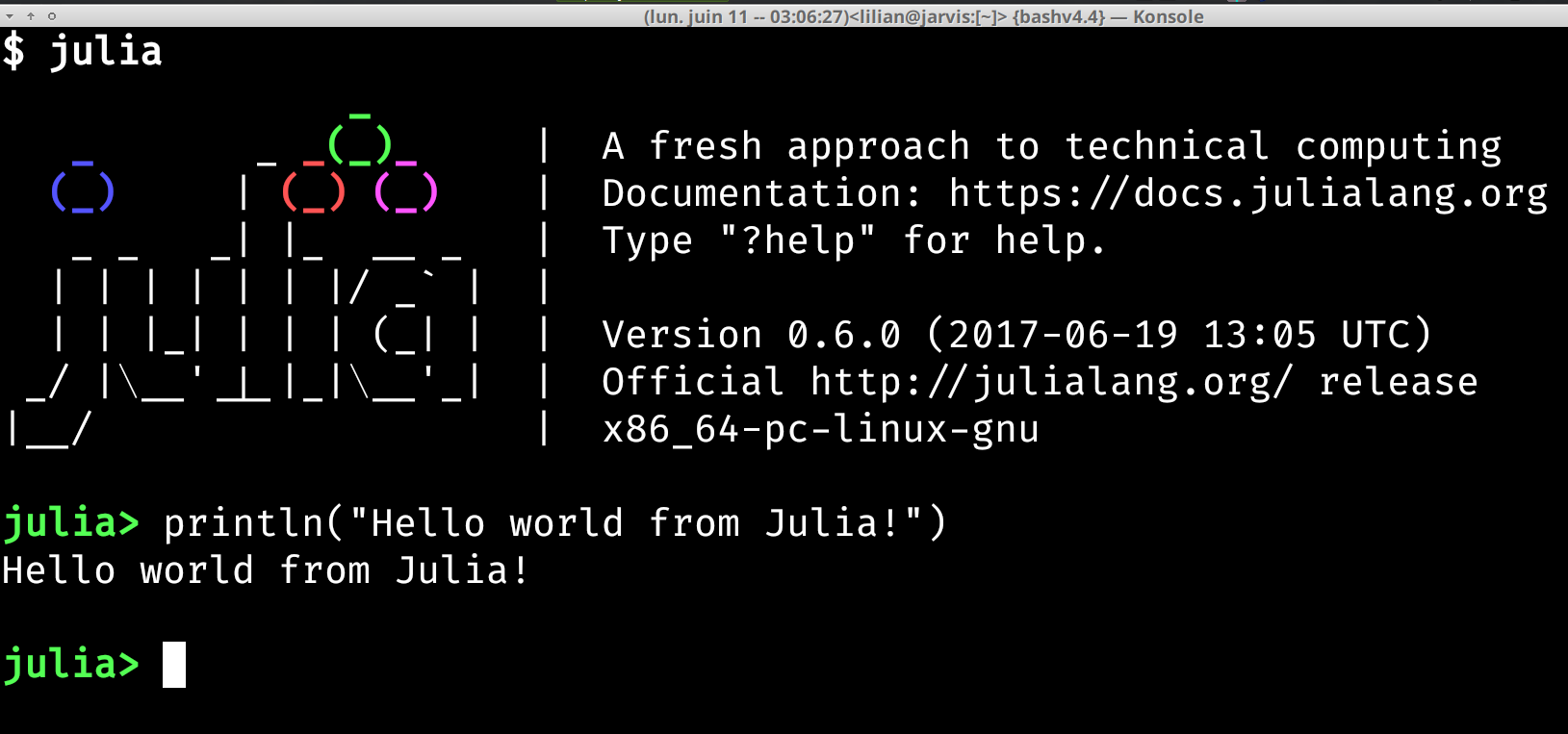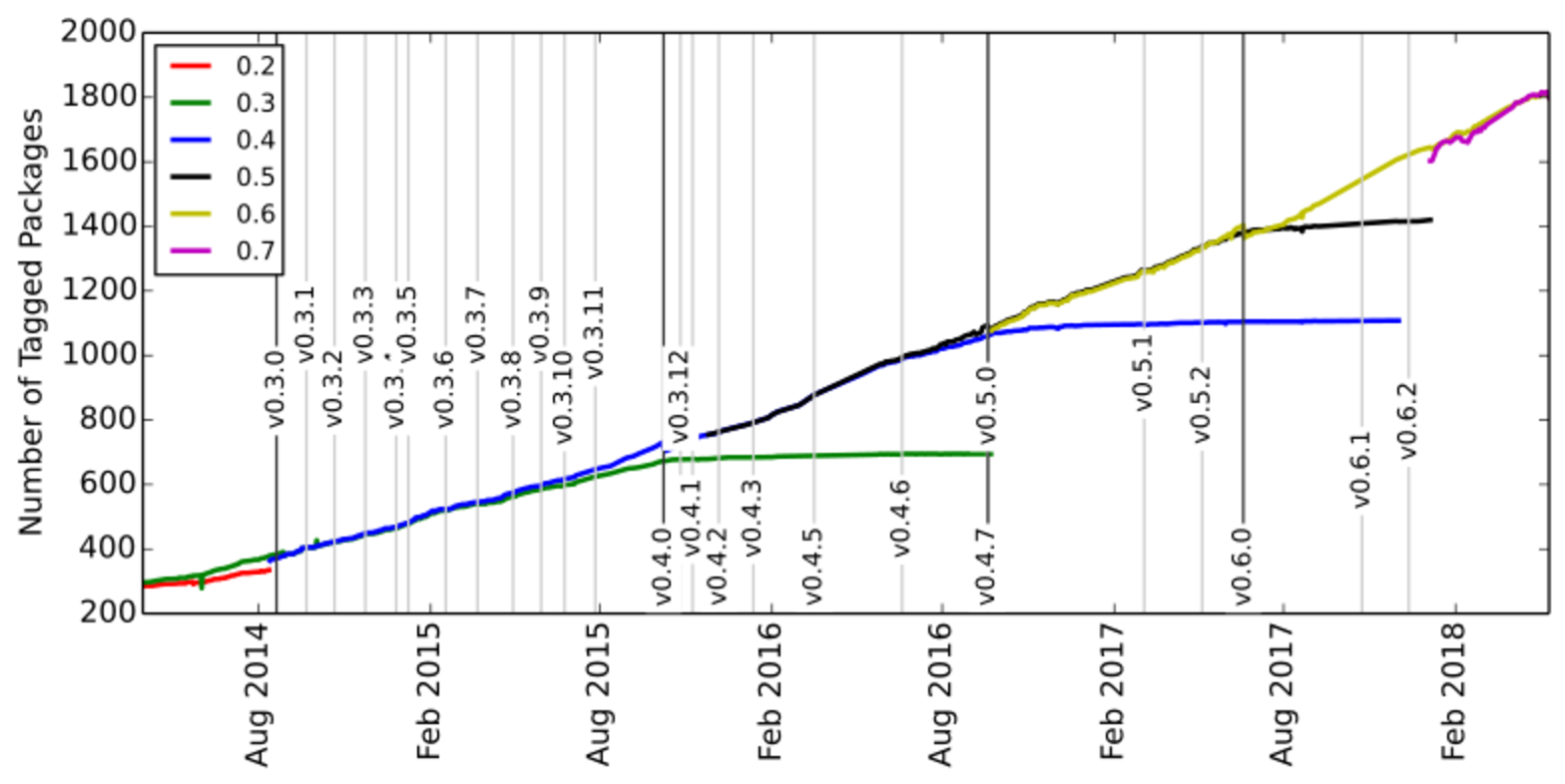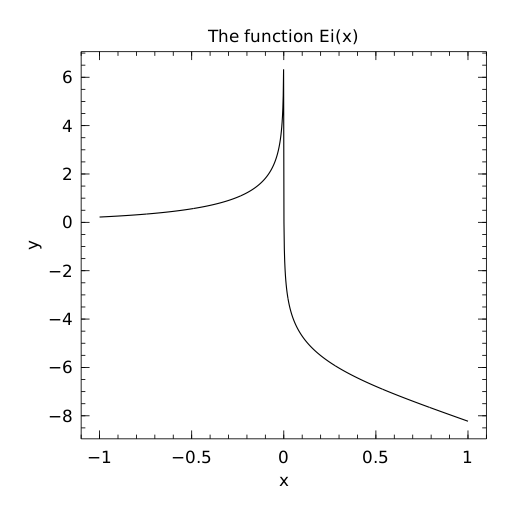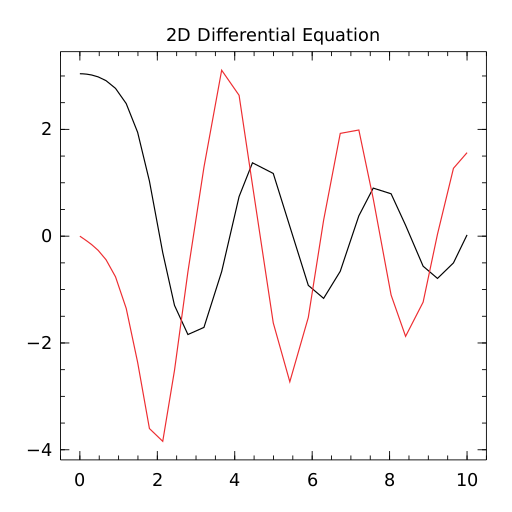| title | subtitle | author | institute | date | lang |
|---|---|---|---|---|---|
Julia, my new computing friend? |
Julia introduction for MATLAB users |
Lilian Besson and Pierre Haessig |
SCEE Team, IETR, CentraleSupélec, Rennes |
Thursday 14th of June, 2018 |
english |
Note: a PDF is available here online.
« Julia, my new friend for computing and optimization? »
-
Intro to the Julia programming language, for MATLAB users
-
Date: 14th of June 2018
-
Who: Lilian Besson & Pierre Haessig (SCEE & AUT team @ IETR / CentraleSupélec campus Rennes)
Agenda for today [25 min]
- What is Julia [3 min]
- Comparison with MATLAB [3 min]
- Examples of problems solved Julia [5 min]
- Longer example on optimization with JuMP [10min]
- Links for more information ? [2 min]
1. What is Julia ?
- Developed and popular from the last 7 years
- Open-source and free programming language (MIT license)
- Interpreted and compiled, very efficient
- But easy syntax, dynamic typing, inline documentation etc
- Multi-platform (Windows, Mac OS X, GNU/Linux etc)
- MATLAB-like imperative style
- MATLAB-like syntax for linear algebra etc
- Designed to be simple to learn and use
- Easy to run your code in parallel (multi-core & cluster)
- Used worldwide: research, data science, finance etc…
Ressources
- Website:
- JuliaLang.org for the language
- & Pkg.JuliaLang.org for packages
- Documentation : docs.JuliaLang.org
Comparison with MATLAB
| Julia 😃 | MATLAB 😢 | |
|---|---|---|
| Cost | Free ✌️ | Hundreds of euros / year |
| License | Open-source | 1 year user license (no longer after your PhD!) |
| Comes from | A non-profit foundation, and the community | MathWorks company |
| Scope | Mainly numeric | Numeric only |
| Performances | Very good performance | Faster than Python, slower than Julia |
| Packaging | Pkg manager included. Based on git + GitHub, very easy to use |
Toolboxes already included but 💰 have to pay if you wat more! |
| Editor/IDE | Jupyter is recommended (Juno is also good) | Good IDE already included |
| Parallel computations | Very easy, low overhead cost | Possible, high overhead |
| Usage | Generic, worldwide 🌎 | Research in academia and industry |
| Fame | Young but starts to be known | Old and known, in decline |
| Support? | Community$^1$ (StackOverflow, mailing lists etc). | By MathWorks |
| Documentation | OK and growing, inline/online | OK, inline/online |
Note$^1$: JuliaPro offer paid licenses, if professional support is needed.
How to install Julia ⬇️
-
You can try online for free on JuliaBox.com
-
On Linux, Mac OS or Windows:
- You can use the default installer 📦 from the website julialang.org/downloads
-
Takes about 4 minutes... and it's free !
You also need Python 3 to use Jupyter ✨, I suggest to use Anaconda.com/download if you don't have Python yet.
- Select the binary of your platform 📦
- Run the binary 🏃 !
- Wait 🕜…
- Done 👌 ! Test with
juliain a terminal
Different tools to use Julia
Demo time ⌚ !
- Use Jupyter notebooks to write or share your experiments
(examples:
github.com/Naereen/notebooks)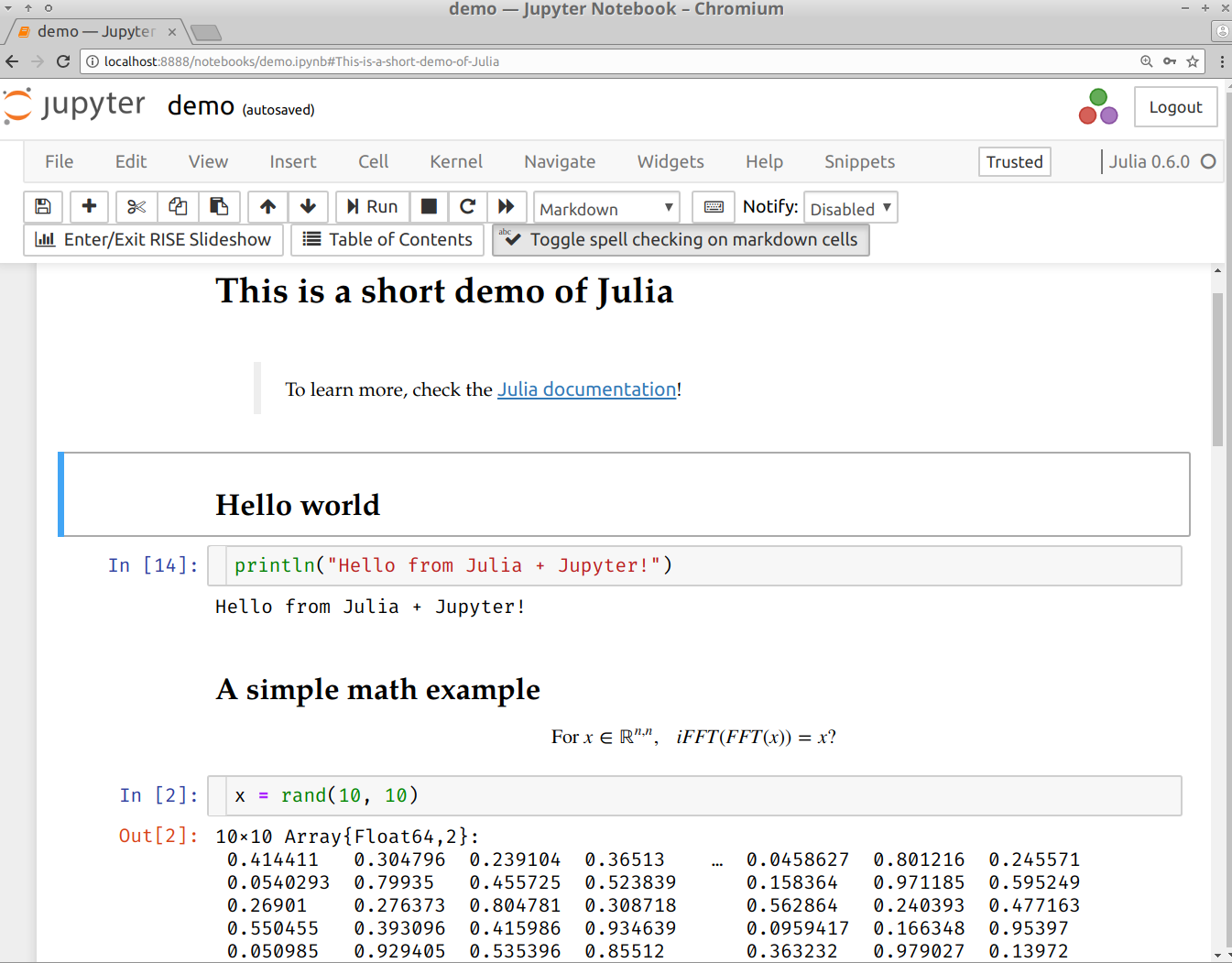
Demo time ⌚ !
📦 How to install modules in Julia ?
- Installing is easy !
julia> Pkd.add("IJulia") # installs IJulia- Updating also!
julia> Pkg.update()🔍 How to find the module you need ?
- First… ask your colleagues 😄 !
- Complete list on pkg.JuliaLang.org
📦 Overview of famous Julia modules
- Plotting:
Winston.jlfor easy plotting like MATLABPyPlot.jlinterface to Matplotlib (Python)
- The JuliaDiffEq collection for differential equations
- The JuliaOpt collection for optimization
- The JuliaStats collection for statistics
- And many more!
Find more specific packages on GitHub.com/svaksha/Julia.jl/
Many packages, and a quickly growing community
Julia is still in development, in version v0.6 but version 1.0 is planned soon!
2. Main differences in syntax between Julia and MATLAB
| Julia | MATLAB | |
|---|---|---|
| File ext. | .jl |
.m |
| Comment | # blabla... |
% blabla... |
| Indexing | a[1] to a[end] |
a(1) to a(end) |
| Slicing | a[1:100] (view) |
a(1:100) (:warning: copy) |
| Operations | Linear algebra by default | Linear algebra by default |
| Block | Use end to close all blocks |
Use endif endfor etc |
| Help | ?func |
help func |
| And | a & b |
a && b |
| Or | `a | b` |
| Datatype | Array of any type |
multi-dim doubles array |
| Array | [1 2; 3 4] |
[1 2; 3 4] |
| Size | size(a) |
size(a) |
| Nb Dim | ndims(a) |
ndims(a) |
| Last | a[end] |
a(end) |
| Tranpose | a.' |
a.' |
| Conj. transpose | a' |
a' |
| Matrix x | a * b |
a * b |
| Element-wise x | a .* b |
a .* b |
| Element-wise / | a ./ b |
a ./ b |
| Element-wise ^ | a ^ 3 |
a .^ 3 |
| Zeros | zeros(2, 3, 5) |
zeros(2, 3, 5) |
| Ones | ones(2, 3, 5) |
ones(2, 3, 5) |
| Identity | eye(10) |
eye(10) |
| Range | range(0, 100, 2) or 1:2:100 |
1:2:100 |
| Maximum | max(a) |
max(max(a)) ? |
| Random matrix | rand(3, 4) |
rand(3, 4) |
| L2 Norm | norm(v) |
norm(v) |
| Inverse | inv(a) |
inv(a) |
| Solve syst. | a \ b |
a \ b |
| Eigen vals | V, D = eig(a) |
[V,D]=eig(a) |
| FFT/IFFT | fft(a), ifft(a) |
fft(a),ifft(a) |
Very close to MATLAB for linear algebra!
3. Scientific problems solved with Julia
Just to give examples of syntax and modules
- 1D numerical integration and plot
- Solving a
$2^{\text{nd}}$ order Ordinary Differential Equation
3.1. 1D numerical integration and plot
Exercise : evaluate and plot this function on [-1, 1] :
$$\mathrm{Ei}(x) := \int_{-x}^{\infty} \frac{\mathrm{e}^u}{u} ;\mathrm{d}u$$
How to?
Use packages and everything is easy!
QuadGK.jlfor integrationWinston.jlfor 2D plotting
using QuadGK
function Ei(x, minfloat=1e-3, maxfloat=100)
f = t -> exp(-t) / t # inline function
if x > 0
return quadgk(f, -x, -minfloat)[1]
+ quadgk(f, minfloat, maxfloat)[1]
else
return quadgk(f, -x, maxfloat)[1]
end
end
X = linspace(-1, 1, 1000) # 1000 points
Y = [ Ei(x) for x in X ]
using Winston
plot(X, Y)
title("The function Ei(x)")
xlabel("x"); ylabel("y")
savefig("figures/Ei_integral.png")
3.2. Solving a $2^{\text{nd}}$ order ODE
Goal : solve and plot the differential equation of a pendulum:
$$\theta''(t) + b ,\theta'(t) + c ,\sin(\theta(t)) = 0$$ For$b = 1/4$ ,$c = 5$ ,$\theta(0) = \pi - 0.1$ ,$\theta'(0)=0$ ,$t\in[0,10]$
How to?
Use packages!
DifferentialEquations.jlfunction for ODE integrationWinston.jlfor 2D plotting
using DifferentialEquations
b, c = 0.25, 5.0
# macro magic!
pend2 = @ode_def Pendulum begin
dθ = ω # ← yes, this is UTF8, θ and ω in text
dω = (-b * ω) - (c * sin(θ))
end
prob = ODEProblem(pend, y0, (0.0, 10.0))
sol = solve(prob) # ↑ solve on interval [0,10]
t, y = sol.t, hcat(sol.u...)'
using Winston
plot(t, y[:, 1], t, y[:, 2])
title("2D Differential Equation")
savefig("figures/Pendulum_solution.png")Examples
- Iterative computation: signal filtering
- Optimization: robust regression on RADAR data
Ex. 1: Iterative computation
Objective:
- show the efficiency of Julia's Just-in-Time (JIT) compilation
- but also its fragility...
Iterative computation: signal filtering
The classical saying:
« Vectorized code often runs much faster than the corresponding code containing loops. » (cf. MATLAB doc)
does not hold for Julia, because of its Just-in-Time compiler.
Example of a computation that cannot be vectorized
Smoothing of a signal
Parameter
💥 Iteration (for loop) cannot be avoided.
NB : Matlab also has JIT but it may not work well in all cases.
Signal filtering in Julia 👌
function smooth(u, a)
y = zeros(u)
y[1] = (1-a)*u[1]
for k=2:length(u) # this loop is NOT slow!
y[k] = a*y[k-1] + (1-a)*u[k]
end
return y
endPerformance of the signal filter
| Implementation | Time for |
notes |
|---|---|---|
| Julia | Fast! Easy! 👌 | |
| Octave native | slow!! 🐌 | |
| Python native | slow! 🐌 | |
SciPy's lfilter
|
many lines of C | |
Python + @numba.jit
|
since |
@numba.jit # <- factor ×100 speed-up! def smooth_jit(u, a): y = np.zeros_like(u) y[0] = (1-a)*u[0] for k in range(1, len(u)): y[k] = a*y[k-1] + (1-a)*u[k] return y
Conclusion on the performance
For this simple iterative computation:
- Julia performs very well, much better than native Python
- but it's possible to get the same with fresh Python tools (Numba)
- more realistic examples are needed
Fragility of Julia's JIT Compilation 💥
The efficiency of the compiled code relies on type inference.
function smooth1(u, a)
y = 0
for k=1:length(u)
y = a*y + (1-a)*u[k]
end
return y
endfunction smooth2(u, a)
y = 0.0 # <- difference is here!
for k=1:length(u)
y = a*y + (1-a)*u[k]
end
return y
endAn order of magnitude difference 🐌vs🏃♂️
julia> @time smooth1(u, 0.9);
0.212018 seconds (30.00 M allocations: 457.764 MiB ...)julia> @time smooth2(u, 0.9);
0.024883 seconds (5 allocations: 176 bytes)Fortunately, Julia gives a good diagnosis tool 🛠️
julia> @code_warntype smooth1(u, 0.9);
... # ↓ we spot a detail
y::Union{Float64, Int64}
...y is either Float64 or Int64 when it should be just Float64.
Cause: initialization y=0 vs. y=0.0!
Ex. 2: Optimization in Julia
Objective: demonstrate JuMP, a Modeling Language for Optimization in Julia.
Some research groups migrate to Julia just for this package!
Cf. JuMP.ReadTheDocs.io for documentation!
Optimization problem
Example problem: identifying the sea clutter in Weather Radar data.
- is a robust regression problem
-
$\hookrightarrow$ is an optimization problem!
-
References
An « IETR-colored » example, inspired by:- Radar data+photo: P.-J. Trombe et al., « Weather radars – the new eyes for offshore wind farms?,» Wind Energy, 2014.
- Regression methods: S. Boyd and L. Vandenberghe, Convex Optimization. Cambridge University Press, 2004. (Example 6.2).
Weather radar: the problem of sea clutter
Given
An optimization problem with two parameters:
Regression as an optimization problem
The parameters for the trend
where
-
$\phi(r) = r^2$ : quadratic deviation$\rightarrow$ least squares regression -
$\phi(r) = \lvert r \rvert$ : absolute value deviation -
$\phi(r) = h(r)$ : Huber loss - ...
🔧 Choice of penalty function
The choice of the loss function influences:
- the optimization result (fit quality)
- e.g., in the presence of outliers
- the properties of optimization problem: convexity, smoothness
Properties of each function
- quadratic: convex, smooth, heavy weight for strong deviations
- absolute value: convex, not smooth
- Huber: a mix of the two
🛠️ How to solve the regression problem?
Option 1: a big bag of tools
A specific package for each type of regression:
- « least square toolbox » (
$\rightarrow$ MultivariateStats.jl) - « least absolute value toolbox » (
$\rightarrow$ quantile regression) - « Huber toolbox » (i.e., robust regression
$\rightarrow$ ???) - ...
Option 2: the « One Tool »
- more freedom to explore variants of the problem
Modeling Languages for Optimization
Purpose: make it easy to specify and solve optimization problems without expert knowledge.
JuMP: optimization modeling in Julia
- The JuMP package offers a domain-specific modeling language for mathematical optimization.
JuMP interfaces with many optimization solvers: open-source (Ipopt, GLPK, Clp, ECOS...) and commercial (CPLEX, Gurobi, MOSEK...).
-
Other Modeling Languages for Optimization:
- Standalone software: AMPL, GAMS
- Matlab: YALMIP (previous seminar), CVX
- Python: Pyomo, PuLP, CVXPy
Claim: JuMP is fast, thanks to Julia's metaprogramming capabilities (generation of Julia code within Julia code).
📈 Regression with JuMP — common part
- Given
xandythe$300$ data points:
m = Model(solver = ECOSSolver())
@variable(m, a)
@variable(m, b)
res = a*x .- y + bres (« residuals ») is an Array of JuMP.GenericAffExpr{Float64,JuMP.Variable}, i.e., a semi-symbolic affine expression.
- Now, we need to specify the penalty on those residuals.
Regression choice: least squares regression
Reformulated as a Second-Order Cone Program (SOCP):
@variable(m, j)
@constraint(m, norm(res) <= j)
@objective(m, Min, j)(SOCP problem
Regression choice: least absolute deviation
Reformulated as a Linear Program (LP)
@variable(m, t[1:n])
@constraint(m, res .<= t)
@constraint(m, res .>= -t)
@objective(m, Min, sum(t))Solve! ⚙️
julia> solve(m)
[solver blabla... ⏳ ]
:Optimal # hopefullyjulia> getvalue(a), getvalue(b)
(-1.094, 127.52) # for least squaresObservations:
- least abs. val., Huber ✅
- least squares ❎
JuMP: summary 📜
A modeling language for optimization, within Julia:
- gives access to all classical optimization solvers
- very fast (claim)
- gives freedom to explore many variations of an optimization problem (fast prototyping)
🗒️ More on optimization with Julia:
- JuliaOpt: host organization of JuMP
- Optim.jl: implementation of classics in Julia (e.g., Nelder-Mead)
- JuliaDiff: Automatic Differentiation to compute gradients, thanks to Julia's strong capability for code introspection
Conclusion
Sum-up
- I hope you got a good introduction to Julia 👌
- It's not hard to migrate from MATLAB to Julia
- Good start:
docs.JuliaLang.org/en/stable/manual/getting-started - Julia is fast!
- Free and open source!
- Can be very efficient for some applications!
Thanks for joining 👏 !
Your mission, if you accept it... 💥
- 👶 Padawan level: Train yourself a little bit on Julia
$\hookrightarrow$ JuliaBox.com ? Or install it on your laptop! And ead introduction in the Julia manual! - 👩🎓 Jedi level: Try to solve a numerical system, from your research or teaching, in Julia instead of MATLAB
- ⚔️ Master level: From now on, try to use open-source & free tools for your research (Julia, Python and others)… 🤑


